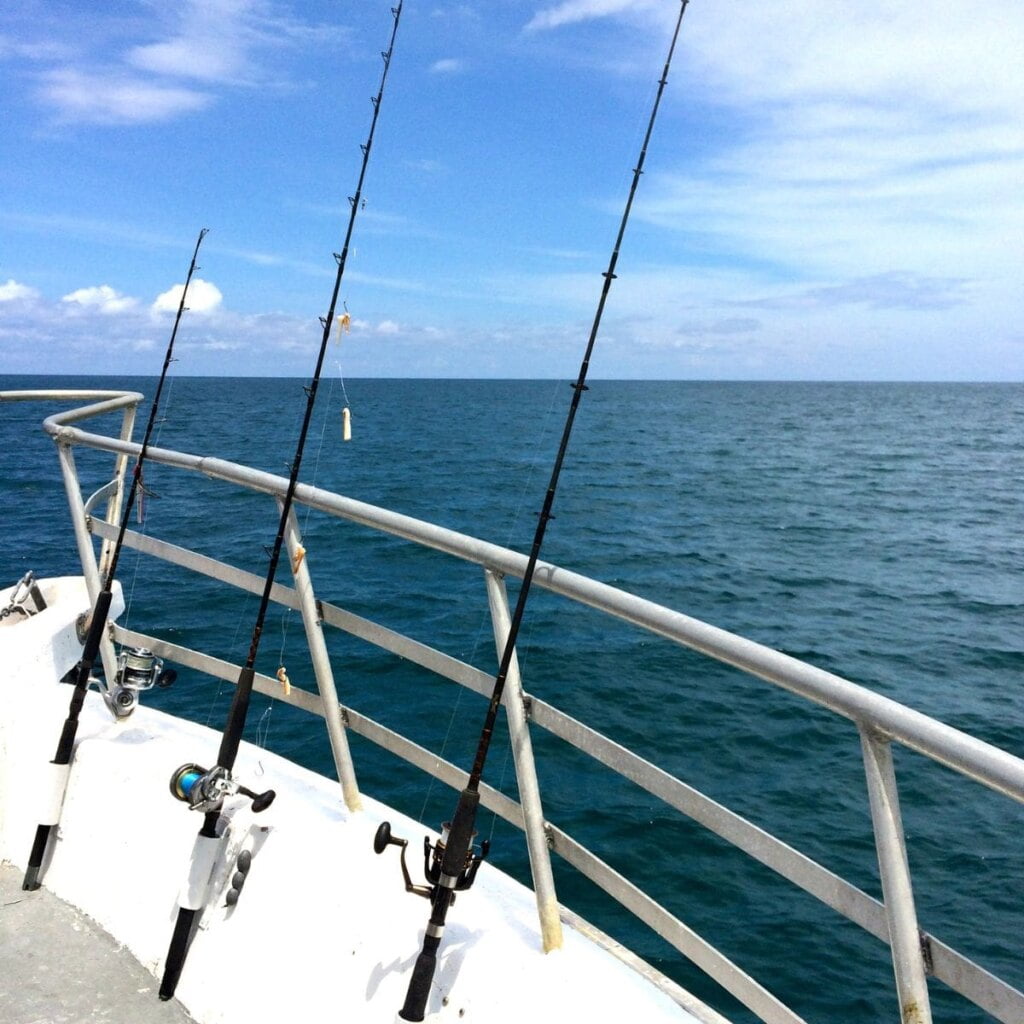California open fishing seasons vary by fish species; by boat-based anglers, shore-based anglers, and divers; by California regions; and are subject to change. Southern California fishing regulations boundaries start at the U.S. – Mexico Border and extend to Point Conception, Santa Barbara County (34°27 N. Latitude). This includes San Diego, Orange, Los Angeles, Ventura and a portion of Santa Barbara County.

California Open Fishing Seasons
The following fish species have open and closed fishing seasons. Regulations vary by boat-based anglers, shore-based anglers, and divers and are subject to change.
Always check the Current Southern California Open Season Fishing Regulations for current updates or call the Recreational Groundfish Fishing Regulations Hotline (831) 649-2801 for the latest information. Also find Open Fishing Seasons for all California regions.
- Abalone: Closed for fishing until further notice
- Cabezon: Normally found nearshore and they are often found near kelp beds, jetties, isolated rocky reefs, or pinnacles, and in shallow tide pools. Most of their time is spent sitting in rock crevices, on reefs, in tidepools, or on kelp blades beneath the canopy, but not actively swimming.
- California Halibut: The geographic range for California halibut (halibut) extends from the Quillayute River in northern Washington to Cabo Falsa in southern Baja California, Mexico.
- California Scorpionfish (a.k.a. sculpin): Live from tide pools and juveniles and adults are most abundant on hard bottom such as rocky reefs, sewer pipes and wrecks.
- California Sheephead: Fished primarily south of Point Conception (Santa Barbara County) in nearshore waters around the offshore islands and along the mainland shore over rocky reefs and in kelp forests.
- Clams: Found buried in surf sand.
- Dungeness Crabs: Dungeness Crab season varies by fishing region but is often open as early as November and closed by July. It is common for the CDFW to push back the start date or end the crab season early due to population concerns, to protect migrating whales, meat quality and other reasons.
- Giant Sea Bass (a.k.a. black sea bass): Giant sea bass are prohibited for recreational take. Most commercial fisheries are also prohibited from taking or landing giant sea bass; however exceptions exist for fish taken incidentally in certain net fisheries.
- Kelp and Rock Greenlings: Kelp greenling are a popular target for recreational rocky shore anglers and divers in central and northern California. Rock greenling are caught by shore-based and boat-based anglers fishing in waters north of San Francisco.
- Kelp Bass, Barred Sand Bass, Spotted Sand Bass: Kelp bass range from the Columbia River in Washington south to southern Baja California, Mexico, but are rare north of Point Conception in California. Barred sand bass range from Santa Cruz, California, to southern Baja California, Mexico, but are rare north of Point Conception. Spotted sand bass are considered sub-tropical and range from Monterey, California to Acapulco, Mexico, including the Gulf of California, and are most common from Newport Bay to the Gulf of California.
- Leopard Shark: Targeted by recreational anglers and small-scale commercial fisheries in California ocean waters. Recreational anglers land the majority of the leopard shark.
- Lingcod: Live on or near the bottom of the ocean (with a few exceptions).
- Mussels: Submerged, hard surfaces within the middle intertidal zone to subtidal areas up to 24 meters (79 feet) in depth. They favor surf zones and attach themselves to exposed rocks, pilings, or other mussels in those areas.
- Ocean Salmon: Found in the ocean from the Bering Sea, Alaska and Japan to central Baja California, Mexico. Most commonly, Chinook are distributed from San Luis Obispo County, California, north to the Bering Sea, Alaska.
- Ocean Whitefish: Found in deep sandy bottom habitats during the day, but move to shallow rocky reef or kelp bed habitat at night.
- Other Federally Managed Groundfish:
- Pacific Herring: Found in places with protected water, near considerably deep channels.
- Pacific Sanddab and Other Flatfish: Pacific sanddabs prefer deep, sandy environments. They are found between the intertidal and 549 meters (1,800 feet). They are most abundant at depths between about 40 and 100 meters (120 and 300 feet).
- Petrale Sole and Starry Flounder: Starry flounder can be found from the Bering Sea, Alaska to Los Angeles Harbor, southern California. They are most common north of Point Conception, California.
- Rock Crab: Landings are higher in the Southern California Bight with concentrations of landings along the mainland of the Santa Barbara Channel, northern Channel Islands, and Point Loma. Landings north of the bight are concentrated around Morro and San Francisco Bays. The average fishing depth is 120 feet.
- Rockfish: Part of a group of fish known as groundfish, which includes over 90 species that live on or near the bottom of the ocean (with a few exceptions).
- Sharks (State-managed): Generally open to fish year-round except white sharks may not be taken or possessed at any time.
- Soupfin Shark and Spiny Dogfish: Sport fishing boats in San Francisco Bay and southern California began targeting soupfin. Recreational anglers in California do not target spiny dogfish; however, due to its voracious feeding nature, it is frequently caught incidentally and considered a nuisance by many recreational anglers.
- Spiny Lobster: The commercial spiny lobster fishery ranges from Point Conception south to the U.S. and Mexico border. The California recreational fishery ranges from Central San Luis Obispo County south to the U.S. and Mexico border.
- Surfperch: Found in places where there’s a deep hole or depression nearshore.
- Trout: Trout fishing season opens on the last Saturday in April through November 15th every year. Some areas allow catch-and-release only year round.
- Tunas: Tunas range throughout the West coast.
- White Seabass: White seabass range from Point Conception, California to Magdalena Bay, Baja California Sur, Mexico. During warmer years, individuals have been caught as far north as Juneau, Alaska. They are also found in the northern Gulf of California.
- Yellowtail: Yellowtail are primarily caught in nearshore waters near kelp forest or other reef habitats, or from underneath floating kelp mats offshore.
California Department of Fish & Wildlife Resources
- Ocean Sport Fishing Regulations
- Southern California Marine Protected Areas
- California Beach Fishing (including free fishing piers, jetties & breakwaters)
- Inland and Freshwater Sport Fishing
- Fishing & Diving Records
Related Articles
| Fishing In Orange County | Fish Stocking Schedule |
| Irvine Lake | Bass Pro Shops’ Outdoor World Irvine |
| Orange County Piers | Whale Watching In Orange County |

